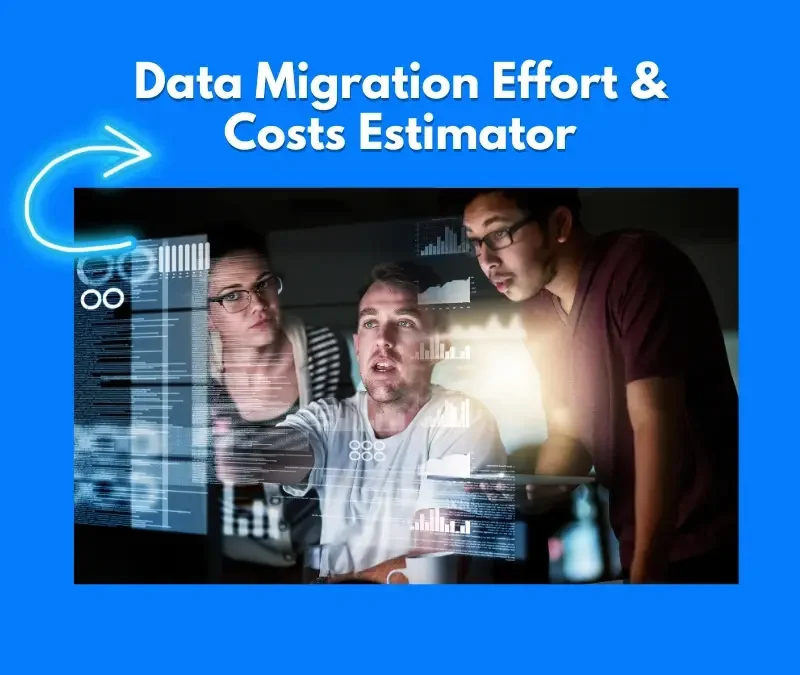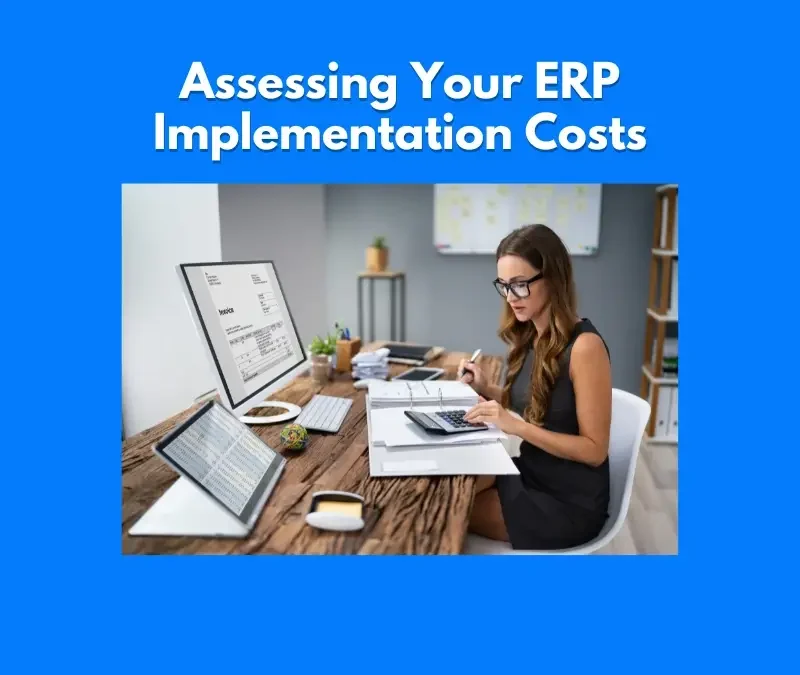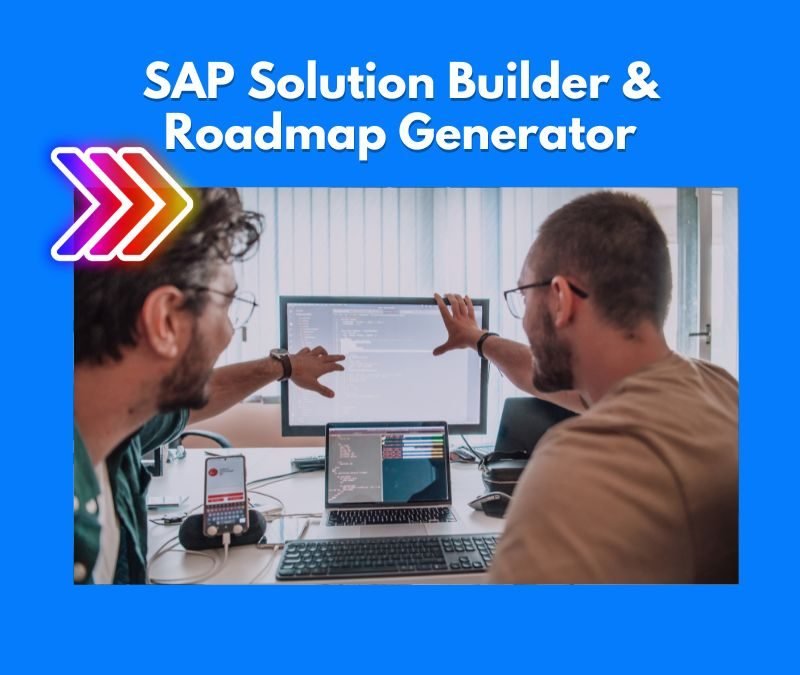SAP Articles
SAP License Negotiation: How to Save Millions $$$ in 2025
Noel DCosta
- Last Update :
I have watched companies sign SAP agreements, smile, and move on. A few months later, the smiles fade when the first audit lands. One firm purchased thousands of licenses, but usage data showed barely half of them were active. Another assumed indirect access was just a clause in fine print. Then came a bill that nearly matched their original deal. These are not one-offs stories. They happen more often than most people realize, and they are preventable. SAP License Negotiation is important!
SAP licensing is full of gaps that only show up once money is already spent. You have user types, license tiers, indirect access rules, and renewal clauses. One wrong interpretation, and your actual costs drift far from what you expected. I have seen companies quietly lose 25 percent of their ERP budget just from these oversights.
Before you lock anything in, stop and dig into the details:
What counts as real usage, and who defines that?
Are unused licenses tied to inactive accounts or past hires?
How will this license model scale if your team or systems change?
If you are planning a project now, reviewing your SAP Implementation Cost Breakdown might be a good place to start. You may also find this SAP Clean Core Strategy useful, especially if you’re moving toward S/4HANA. And for implementation timing, this guide on the 2025 SAP Timeline Planning Essentials breaks down what often goes wrong.
I’m Noel D’Costa, and I work with business leaders to help them make smart, defensible ERP investments. If you’re negotiating an SAP deal or just want a second opinion, feel free to reach out. The earlier you address these gaps, the easier they are to fix.

SAP license negotiation determine whether you control your IT roadmap or SAP controls it for you.
The biggest savings in SAP deals come from preventing audit penalties, not from getting the initial discount.
Key Takeaways about SAP License Negotiation
I’ve watched SAP license discussions fall apart halfway through for reasons that look small at first. A missing report here, a forgotten test user there. Costs rise quietly. Here are ten checkpoints I keep on my desk. They help me when I work with my clients, most of the time.
Measure real usage first. Pull a thirty-day login report. You may find whole teams with zero logins.
Map indirect access points. E-Commerce sites or CRM link may count as paid use. My article on ERP integration with Salesforce shows how fast fees appear.
Define user types in writing. Professional, Limited, Developer. Tiny wording gaps later become audit findings. You really need to be very specific and detailed on this one.
Retire stale accounts. I once cut a license bill by ten percent by deleting test IDs. Simple win but major benefit.
Cap yearly price rises. Three percent sounds fine but compound it over five years and numbers jump.
You don’t have to pay for licenses from Day 1: Did you know that you could phase out your licenses over a period of time? If you provide your roadmap to SAP and tell them to price it based on that, they will!
Plan future modules now. If you are thinking about Ariba or other SAP cloud solutions, lock bundle terms early. My SAP Ariba guide lists sneaky add-ons.
Ask for license swaps. Extremely important! People change roles. Shelfware should move with them.
Set audit ground rules. Agree notice periods and what data leaves your server. This causes less panic later and you have better control of your audit process.
Check digital document counts. An invoice viewed outside SAP may burn a license. The SAP Business One price guide covers a real case.
Bring a second set of eyes. I think an outside review pays for itself. My experience as an SAP ERP Consultant shows where I have caught hidden costs. You can really benefit from my experience!
Some of these points may feel obvious. They often get skipped when the contract clock is ticking. Better to pause now than pay extra for five years.
SAP Licensing - What You Should Know?
SAP licensing can feel like three puzzles stacked together. On‑premise metrics, cloud subscriptions, and newer bundles such as RISE or GROW each come with their own rules. Here is a clearer guide, which is rooted in real contracts, not brochures and that any business owner can use to keep control.
1. Classic On‑Premise Terms
You buy a perpetual license and pay about 22% annually for support.
Named User: Assign the correct category, which is Professional, Limited, Developer, Worker. Misalignment often triggers audit penalties.
Engine or Package: Modules are priced by turnover, purchase orders, or employee count. Ask why this metric was chosen.
Digital Access: Non‑SAP tools that create or view SAP documents still consume licences. Check every interface, including those managed via SAP CPI.
Sandbox Coverage: Training or test systems count unless you negotiate exceptions. This often surprises teams during renewals.
Also, my guide on why SAP data migration fails highlights how overlooked data volumes can affect licence strategies.
2. Pure Cloud Subscription
SAP cloud moves cost to recurring fees with no server upkeep, but tighter contracts.
Full‑Use Equivalent (FUE): A conversion metric for users. Review it annually.
Usage Metrics: Some services are billed by employee, others by transactions or storage. For example, my SAP Business One price guide shows the split between infra and licence.
Tenant Type: Single‑tenant offers isolation and customization but costs more and adds upgrade constraints.
Service Credits: Support hours or BTP credits often expire. Track what you have and use them in time.
3. RISE with SAP
RISE combines S/4HANA Cloud, BTP, Signavio, tools, and support into one subscription.
Core Bundle: Includes runtime licences for standard modules. Industry functionality may be extra.
Conversion Ratios: Your legacy licence types convert into cloud credits. My guide on Clean Core Strategy shows why clean systems cost less in conversion.
Bundled Hours: Consulting or migration hours are included. They expire, so schedule early.
Exit Conditions: Verify in advance how data is returned or retained if you exit RISE. Avoid worries later.
4. GROW with SAP
GROW is built for mid‑market companies aiming for speed.
Starter Packs: Fast deployment with limited users and scope. It is low‑cost until change requests stack up.
Scalable Blocks: Add users in chunks to ensure prices drop after thresholds. Plan headcount two years ahead.
Adoption Credits: Training budgets are included but expire. My GROW overview details missing modules.
5. Owner’s Quick Checklist
Map users to licence roles and update every quarter.
Track every interface against digital access rules.
Cap annual price increases in cloud agreements.
Monitor service credit expiry dates.
Negotiate exit terms proactively.
These practices often pay for themselves many times over. They do take time. But time spent now beats costly audits or surprise invoices later. If you have a renewal or new deal coming, let’s talk. A quick contract review can make the difference between controlled investment and uncontrolled cost overruns.
Understanding SAP License Contractual Terms Before You Sign

SAP licensing contracts are rarely short, and in my experience, the tricky parts are often not the product names or user counts. It’s the fine print. The assumptions. The clauses that only become a problem when you’re locked in and the system is live.
Business owners often come to me after the contract is signed. By then, some choices can’t be rolled back without cost. That’s why I tell clients, slow down during the contracting phase. Read it line by line, especially if you’re dealing with RISE with SAP or GROW packages, or even traditional SAP S/4HANA on-premise deals.
Here are the main contractual terms you need to understand before signing anything:
1. Named Users
These are not just “employees.” They’re mapped to specific roles, like Developer, Professional, Limited. Each comes with limits. If you assume one user type and later need more capability, upgrades can be expensive. I wrote more about pricing in this SAP Business One price guide.
2. Scope of Use
What’s included—production, development, sandbox? I’ve seen cases where clients assumed QA was included, only to get billed extra. If you’re using tools like SAP Integration Suite or CPI, clarify whether those licenses include access for non-SAP systems as well.
3. Price Uplift Clauses
Most cloud deals include annual increases. Often 5 to 7 percent. Unless capped or negotiated, they add up over three to five years. Try to lock pricing for the full term, especially if you’re paying upfront for year one.
4. Renewals and Auto-Extension
This one trips up a lot of people. Some cloud contracts renew automatically unless terminated 90 days before expiry. If you miss that date, you’re stuck with another year—like it or not.
5. Data Access After Termination
Suppose you exit the contract. What happens to your data? Some providers charge for access post-termination. Others only give you exports in unreadable formats. You need clarity before you get there. Not after.
6. Indirect Usage
This is where external systems touch SAP (think Salesforce, e-commerce, BI tools). If those actions trigger SAP processes, SAP may consider that “usage.” And yes, they can charge for it. I covered this issue in detail here.
7. Support Terms and SLAs
Ask for more than just “99.9% uptime.” What’s the actual response time for a Priority 1 issue? What if there’s a recurring bug? Can you escalate directly to SAP, or must you go through a partner?
8. Audit and Compliance Rights
SAP audits are not rare. And they can go back years. Make sure your contract includes a clear audit process and time allowed for remediation if any gaps are found.
9. Exit Clauses
If you leave SAP, what’s the offboarding process? Do they help you migrate data? Or do you pay for that? Make sure there’s no ambiguity. Once a contract ends, cooperation usually drops sharply.
10. Bundled Services with Expiry
Some deals include hours for implementation or training. But they expire. I’ve seen businesses lose thousands because they didn’t use those hours within 12 months. It’s buried deep in the T&Cs.
You can also explore broader SAP cost planning topics in my cost and budget breakdown guide or how to control SAP scope creep.
If you are about to sign or renew an SAP license agreement, take the time to walk through these terms carefully. Or better yet, work with someone who has done it before. I’ve supported small and mid-sized businesses in contract reviews and vendor negotiations for years. You do not need to do this blind. I’m happy to help.
Related Topics: SAP License Negotiation
SAP Negotiation Advisors Reduce Cost
Learn how external advisors can help trim license expenses and sidestep vendor pricing tricks.
Essential SAP Implementation Team Roles
Define who needs access and why, and ensure clarity in license allocation during negotiations.
SAP Implementation Cost Breakdown
Discover hidden licensing and integration costs that often surface without careful negotiation.
Best SAP Documentation Tools Guide
Accurate documentation helps in usage audits and strengthens your position during renewal talks.
Key SAP Licensing Tools and Deployment Options You Need to Know
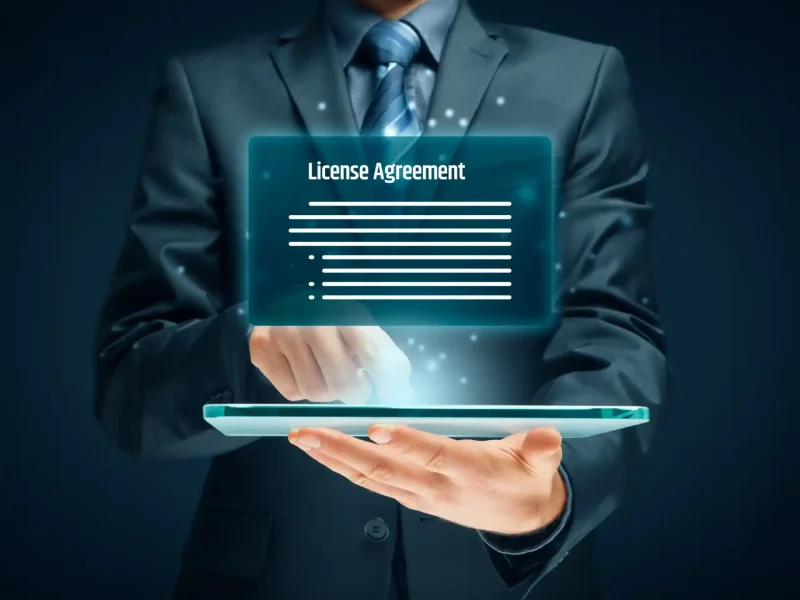
Understanding SAP licensing tools and deployment options is not just for technical folks. Business owners need to make sense of it too, especially when trying to avoid hidden costs or long-term commitments they later regret. In my experience, this is where many small and mid-sized businesses feel left behind. The tools are there, but they are rarely explained well.
SAP offers two primary deployment options: On-Premise and Cloud. Each brings its own licensing model.
- On-Premise typically involves perpetual licenses. You pay upfront, own the license, and then pay annual maintenance, usually around 22 percent. This model gives more control, especially when you want to handle infrastructure in-house. But it also means more effort on your side with upgrades and infrastructure.
- Cloud, on the other hand, follows a subscription model. You pay annually or monthly, and it bundles hosting, upgrades, and sometimes support. RISE with SAP is built for more complex businesses migrating to S/4HANA. It includes infrastructure, tools, and managed services. GROW with SAP, on the other hand, targets small and midsize firms looking for a simpler, faster path into S/4HANA Cloud. It’s lighter but gets you live faster.
Many companies run hybrid environments. You might use SAP Analytics Cloud in the cloud but still run ECC or SAP Business One on-premise. In these cases, compliance gets complicated. That’s why understanding the tools that track usage matters.
A few essential tools and terms to know:
SAP License Administration Workbench (LAW): This tool consolidates user and usage data across SAP systems. It’s what your audit is based on. If your data is messy—like inactive users or inconsistent roles—you could end up overpaying. I’ve worked with firms that cleaned up their LAW data and cut licensing costs significantly.
SAP Solution Manager: Often dismissed as “just technical,” but it helps monitor actual system usage. You can use it to flag modules sitting idle or user activity gaps.
SAP Digital Access Estimation Tool: If your systems connect with third-party apps like Shopify, Salesforce, or custom APIs, this tool estimates digital document creation. That matters for indirect access compliance, an area many businesses overlook.
User Classification Reports: These should be reviewed quarterly. I’ve seen cases where businesses paid for hundreds of Professional licenses when only a small portion actually needed that level of access.
For a deeper look into budgeting and contract strategy, I recommend starting with my breakdown on SAP Implementation Cost and Budget and this guide on Best SAP Implementation Strategies. Also, if you’re running small business operations, this real-world ERP guide might be helpful.
These licensing decisions affect more than IT. They shape how you grow, what support you need, and how well your team can adapt. If you’re unsure where to start or want a second look at your setup, feel free to reach out. I can help assess the fit, flag risks, and make sure the tools serve your business—not the other way around.

See How I Make Your ERP and AI System Selection or Implementation right for you.
ERP & AI System Selection – Identify and choose the right ERP or AI-enabled platform to fit your business needs.
Project Support & Recovery – Keep your project on track or bring failing implementations back under control.
ERP Modernization – Transform existing ERP systems to modern, efficient, and scalable ERP environments.
GET IN TOUCHAnalyze Your Current License Utilization (If this is a License Renewal)

If you’re approaching a license renewal with SAP, one of the most important steps is to review how your licenses are currently being used. From what I’ve seen, most businesses skip this part or rely too much on vendor-provided usage summaries. That can lead to renewals based on outdated assumptions or inflated user counts.
- Start with the basics. Run a fresh user classification report. Then cross-check active users against actual login data. Many companies keep named user licenses assigned to people who left the company months ago. Others continue paying for professional licenses when those users only use a small piece of functionality that could easily fall under a limited or employee role.
- Also, take a closer look at what roles users are actually performing. I worked with a team recently who assumed their warehouse staff needed full professional licenses. When we mapped what they actually did, we realized they only needed logistics execution roles, which cut costs by nearly 40 percent in that area alone.
Here’s what I recommend checking before starting any renewal conversation:
Identify inactive or underutilized users
Re-classify user types based on current activity, not just job titles
Review custom roles and composite roles that might bundle in extra licensing requirements
Check integrations and interfaces, especially those that might trigger digital access events
Use tools like SAP’s License Administration Workbench (LAW) and SAP Solution Manager for system-level clarity
If you are running hybrid systems, make sure you account for overlapping access. A user accessing both SAP ECC and SAP Analytics Cloud might be double-counted in your estimates unless you structure roles carefully.
For cloud customers on RISE or GROW with SAP, check if you are using the full scope of bundled services. Sometimes, I find businesses paying for third-party tools already covered under their SAP subscription.
If this sounds like a lot to dig through, I can help break it down. You can also review my deeper dives like the SAP Implementation Cost Breakdown or Best SAP Articles for Implementation to understand how cost leaks often hide in operational detail.
The best time to analyze usage is before the vendor starts the renewal conversation. That way, you’re walking into that discussion with facts, not assumptions.
SAP License Negotiation Beyond Pricing
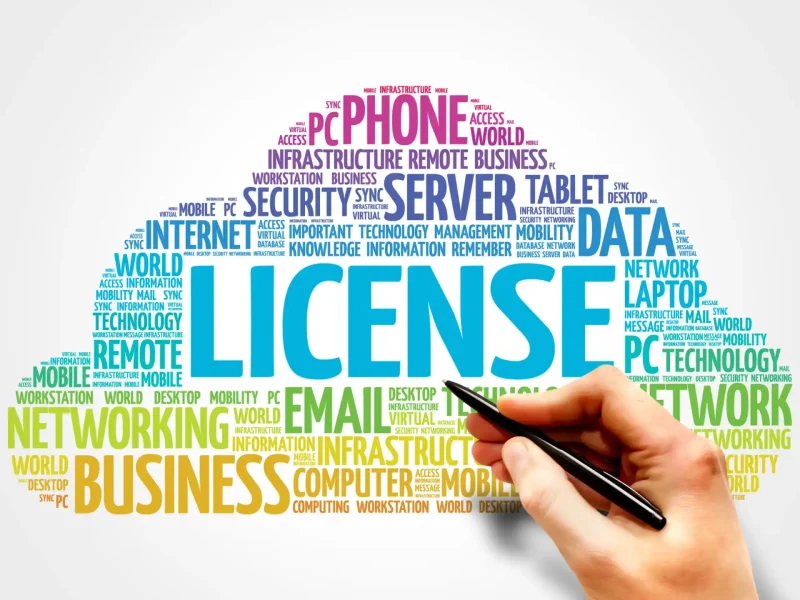
When most people think of SAP license negotiation, they think of discounts. That’s where conversations usually start. But in my experience, especially working with small and mid-sized businesses, the bigger savings often come from what’s buried in the fine print, not just the headline pricing.
For example, many contracts do not clearly define how digital access will be measured. If you are connecting third-party systems like Salesforce or e-commerce platforms to SAP, you need more than pricing clarity. You need usage rules spelled out. Otherwise, you may find yourself dealing with unexpected penalties a year later.
Also look at the terms for user type conversion. Let’s say you start with 100 professional users but later realize only 60 need full access. Can those licenses be downgraded or reassigned? Some contracts allow flexibility, others lock you in. In my view, this should never be an afterthought. It should be a discussion point before the deal closes.
Here are key areas to negotiate beyond just cost:
User reclassification rights – Can you adjust roles without new charges?
Audit frequency and process – Will you be notified in advance? What tools are acceptable?
Digital access terms – Are non-SAP integrations clearly scoped and priced?
Upgrade rights and support – Does your contract include future upgrades and at what cost?
Service bundling – Are you paying separately for tools or features already included in RISE or GROW?
I once helped a client uncover that their cloud contract didn’t include a test tenant, which they assumed was standard. Adding it later was a significant cost. That kind of detail can be easy to miss if you’re only looking at the top-level license cost.
You may find these resources useful while preparing:
If you need someone to review your contract or flag what might cause trouble later, I can help. I focus on real usage patterns, not just templates. That’s where small businesses often find the biggest risks and opportunities.
How to Address Indirect Access Risks Proactively

Indirect access is one of the most misunderstood and costly areas in SAP licensing. I’ve worked with businesses that thought they were fully compliant, only to be hit with unexpected fees during an audit.
The issue usually shows up when non-SAP systems, like CRM, e-commerce platforms, or third-party applications, interact with SAP behind the scenes.
This is what SAP calls digital access. It means documents created in SAP by an external system, even if no human logs in, can still be considered license-relevant. If you do not track and estimate this properly, the financial exposure can be serious.
In my opinion, the biggest mistake companies make is treating indirect access like a technical detail. It is not. It is a legal and financial matter that needs to be built into your architecture, vendor contracts, and audit preparation.
Here’s how to get ahead of it:
Map all system integrations clearly. List every non-SAP system that sends or receives data from SAP.
Use SAP’s Digital Access Estimation Tool. This helps you estimate the number of documents generated through indirect access. It is not always accurate, but it is a required first step.
Document the business process. Understand how documents are created. Are they triggered by an API, middleware, or a batch job? This affects how SAP interprets access.
Negotiate digital access terms before contract renewal. Make sure it is not left vague. You need agreement on how usage is calculated and reported.
Monitor document volume continuously. Treat it like a KPI. Use tools such as SAP Solution Manager or even external log analyzers to detect spikes or unexpected activity.
Avoid unnecessary document creation. Sometimes, simple design changes in your integrations can reduce the number of license-triggering events.
One client I worked with had a mobile field service app. It pushed status updates into SAP after every technician visit. Each update triggered document creation, thousands of times per month. Once we mapped it, we restructured the integration to batch updates instead. That one change significantly reduced their digital access exposure.
You can explore this further in my article on Why SAP Integration with Salesforce Fails and the SAP Analytics Cloud Guide, especially if reporting tools are involved.
If you’re unsure how your setup impacts digital access, or you’re planning a new system integration, I can help review your architecture and flag risks early. Most issues are preventable if you catch them in the design stage, not after the audit notice lands.
Examples of Indirect Licensing in SAP Contracts
Understanding indirect licensing scenarios is crucial to avoid unexpected costs and compliance risks. Below is a table outlining common scenarios, potential risks, and how to mitigate them before signing an SAP contract.
Common Situations that Trigger Indirect Access Charges
| Scenario | Description | Why It Matters |
|---|---|---|
| E-commerce order creation | Orders pushed from an online store into SAP ERP without a user logging in. | SAP treats each order as a document created by the system. This can trigger license usage. |
| Automated invoice processing | Invoices imported via middleware or integration tools. | Each document counts toward digital access and can lead to unexpected charges. |
| Real-time analytics reporting | Users interact with SAP data via tools like dashboards or BI platforms. | Views and extracts may be treated as document access, requiring licensing. |
| Batch job updates | Nightly batch processes update records or prices without human intervention. | Each update can trigger document creation and a licensing requirement. |
| Mobile app actions | Field-service mobile apps log data directly to SAP backend. | Each saved entry counts toward usage. Mobile users still generate document records. |
| EDI transactions | Automated EDI purchase orders and goods receipts posted to SAP. | These interfaces can drive digital access counts even without a user login. |
| Web-service updates | External systems call web services to update SAP master data. | Even backend calls like this may require licensing if the document is modified. |
| Spreadsheet automation | Macros or scripts that upload data from Excel directly into SAP. | Silent bulk uploads can still trigger indirect access billing. |
Key Takeaways
- Clarify System Interactions: Identify all third-party integrations interacting with SAP data.
- Negotiate Specific Terms: Ensure contracts explicitly address indirect access scenarios.
- Monitor Usage Proactively: Use SAP tools to track data exchanges and stay compliant.
Addressing these scenarios before signing the contract can help prevent costly surprises and ensure a well-structured licensing agreement that aligns with your business operations.

Related Topics: SAP License Negotiation
SAP Negotiation Advisors Reduce Cost
How external advisors help cut license costs while avoiding common vendor tactics.
Essential SAP Implementation Team Roles
Choosing the right internal and vendor-side roles during negotiation ensures clarity on who needs access and why.
SAP Implementation Cost Breakdown
Hidden license and integration expenses are often overlooked unless negotiation includes full cost visibility.
Best SAP Documentation Tools
Proper documentation helps during audits and license renewal negotiations—vendors often rely on usage logs.
Benchmark Against Industry Standards
SAP contracts are definitely not one-size-fits-all, and I’ve seen too many companies get locked into overpriced agreements simply because they didn’t compare their deal with what others in their industry are getting.
Businesses that take the time to benchmark their contracts often save up to 25% (if not more). It’s not about luck, it’s about knowing where to push back.
Here’s what you need to do before signing:
See What Others Are Paying – If you’re in manufacturing, retail, or healthcare, your licensing needs won’t look the same. Research similar companies. Are they paying less for the same modules? Are they negotiating better cloud terms? Use this data to challenge your pricing.
Bring in a Licensing Expert – I’ve seen companies save millions by having someone at the table who understands SAP pricing structures inside out. An advisor can spot gaps, find hidden fees, and help you negotiate terms that work for you, not just SAP. That’s my bread and butter.
Negotiate at the Right Time – SAP’s fiscal year-end is prime time for discounts. Vendors need to hit their targets, and that gives you leverage. Timing your deal right can mean lower prices, free add-ons, or better payment terms.
Companies walk into SAP negotiations without a plan and overpay by millions. Do your homework, challenge the pricing, and get a deal that works for your business.
Handling SAP Audits: Get Protection in Your Contract or Pay Later

Handling SAP audits can feel like a quiet threat in the background. Most businesses do not expect an audit to happen, and when it does, they often scramble to explain usage, user counts, and integration flows. In many cases, they assume that once a contract is signed, everything is settled. That assumption is costly.
In my work with mid-sized companies, I’ve seen situations where a routine audit led to seven-figure claims. Not because the company was careless, but because their contracts had no real protection. The audit clauses were vague. There was no cap on backdated penalties. The language allowed SAP to reinterpret indirect access in ways that were never discussed during negotiation.
So, if you are approaching renewal or signing a new deal, include clear audit protections. These are not optional anymore. You are not just buying software. You are entering a long-term agreement where SAP can, and likely will, check how you use it.
Here are a few things to focus on:
Define audit scope clearly. Limit what SAP can request and how often.
Cap retroactive fees. Avoid open-ended financial exposure by setting a limit on what can be charged after an audit.
Include a cure period. If SAP finds overuse, you should have time to correct it before penalties apply.
List known interfaces. Document which systems connect to SAP so there is no ambiguity later.
Get usage reports regularly. Tools like License Administration Workbench (LAW) help track this. But it must be set up correctly.
I often advise clients to include an audit playbook as part of internal governance. Assign someone to own license tracking. Run mock audits yearly. These small steps make a big difference when the real thing comes.
If you are already in contract and nervous about exposure, you are not alone. Many companies carry hidden risk without knowing it. And once the audit letter arrives, it is too late to renegotiate.
In short, audit protections are not about avoiding responsibility. They are about setting fair boundaries. Otherwise, you leave your business exposed to rules that may shift without warning.
SAP Support: Are You Wasting Money?
Many businesses sign up for SAP support and then forget to question what they actually get from it. Over the years, I’ve seen companies pay six figures in annual support fees and still turn to consultants for every meaningful fix. That alone should raise some red flags.
You are likely paying 22% or more of your license cost each year for support. But what’s the return? If you rarely log support incidents, or if your internal team handles most issues, you may be overpaying for a safety net you barely touch.
Here’s what to ask:
How many support tickets did you raise in the last 12 months?
Were the issues resolved by SAP or your consultants?
Are you using Enterprise Support just for patch downloads or documentation?
Most companies never compare support usage against cost. Others are unaware that support can be restructured. For example:
RISE with SAP includes bundled support and cloud operations. If you’re already paying for both separately, you are duplicating spend.
Older systems like ECC may not need Premium Engagement. Third-party support could be cheaper.
Poor training increases dependence on support. A well-documented internal process can cut external reliance.
Support matters. But it should match your needs, not just your vendor’s defaults. You can read more in my breakdown on SAP Implementation Cost and Budget or learn how others avoid waste in Best SAP Implementation Strategies.
If your SAP support feels like a mystery expense, let’s review it. I help clients assess support usage, renegotiate where possible, and plug value leaks that most teams don’t even realize are there.
Don't Let Your SAP License Box You In

Signing an SAP license without thinking about future growth is like buying a small office when you know your team will double in size next year. I’ve seen companies get locked into rigid contracts that don’t scale, forcing them to renegotiate at SAP’s terms.
A report by Panorama Consulting found that nearly half of ERP buyers ran into unexpected costs when trying to expand their systems.
Before you sign, take a step back and think long-term. Will your headcount grow? Are you expanding into new regions? Will you need extra modules in a year or two? Locking in the wrong contract today can mean paying more down the road.
Here’s what to push for in your agreement:
1. Scalability clauses:
Make sure you can scale up or down without SAP forcing you into a complete contract overhaul. Growth shouldn’t mean penalties. Had a healthcare client that paid an extra $800K just to add 50 users because their contract was too rigid. Complete waste of money.
2. Cloud flexibility:
If your business moves toward multi-cloud or hybrid models, your license should allow that without extra headaches. One manufacturing client got stuck paying 30% more when they needed to shift workloads to the cloud. Their contract just didn’t have the flexibility.
3. Future module costs:
Adding new modules shouldn’t come with outrageous fees. Negotiate cost-effective options upfront, especially if you plan to move to S/4HANA. Companies pay double what they should because they don’t lock in module pricing from the start.
I’ve seen companies that saved millions just by structuring their contracts for growth from day one. Don’t wait until you need more licenses to realize SAP has the upper hand—plan for expansion now.
Don’t Overlook Exit Clauses and Penalties
One of the big mistakes I have seen companies make, is signing contracts without checking the exit terms. They focus on pricing and support but completely overlook what happens if they need to scale down, switch vendors, or migrate.
These companies were really hit during COVID. So, when revenues dropped globally and companies had to cut cost, they tried to renegotiate their contracts with SAP, where they were already locked in. The contracts they signed, didn’t allow for any modifications, without paying additional fees.
Then, when they try to exit, they’re hit with massive penalties. As per a Forrester report, it was found that over 40% of companies get stuck with unplanned fees when trying to leave long-term software contracts.
Before you sign anything, please review these key areas:
- Termination and Transfer Rules: Make sure the contract spells out how you can end the agreement or transfer licenses. You got understand that ambiguous clauses = unplanned fees.
- Exit Penalties: Please negotiate for reduced fees for early termination. Some contracts make it nearly impossible to leave without paying a large exit fee.
- Data Access Rights: Get written guarantees that you’ll still have access to your data after the contract ends. I’ve seen businesses lose critical data because they didn’t discuss with clause during the negotiations.
I’ve work with companies that got stuck in rigid contracts, forced to pay millions just to walk away. SAP License Negotiators (like me) provide guidance on structuring contracts for future transitions, but at the end of the day, it’s on you to work with us to get better terms. You have to lock in flexibility now, so that you don’t get trapped later.
Operational and Compliance Safeguards in Your SAP Contract
Beyond costs, your SAP contract should include clauses that protect your operational efficiency and legal interests.
1. Audit and Compliance Terms
- Clause Example: “SAP shall provide a 90-day notice before conducting any audit, with a defined scope limited to agreed licensing terms. Any discrepancies shall allow for a remediation period without penalty.”
- Why it matters: Ensures fair audits with ample time to address any compliance gaps.
2. Termination and Exit Strategy
- Clause Example: “Upon contract termination, the client shall retain full access to all historical data for a period of 12 months, with no additional cost for data retrieval.”
- Why it matters: Prevents costly disruptions and ensures business continuity.
3. Third-Party Support Options
- Clause Example: “The client reserves the right to engage third-party support providers without violating SAP maintenance agreements.”
- Why it matters: Provides the flexibility to explore cost-effective support alternatives.
4. Service Level Agreements (SLA) for Support
- Clause Example: “SAP shall guarantee a maximum response time of [XX] hours for critical incidents and provide escalation pathways.”
- Why it matters: Ensures prompt issue resolution to minimize downtime.
4. Migration Assistance
- Clause Example: “SAP shall provide migration support for future upgrades, including knowledge transfer and technical assistance at no additional cost.”
- Why it matters: Simplifies transitions to newer SAP versions like S/4HANA without unexpected costs.
5. Governing Law and Dispute Resolution
- Clause Example: “Any disputes arising from this agreement shall be governed under the laws of [Jurisdiction], with mediation as the first step before arbitration or litigation.”
- Why it matters: Protects your organization’s legal standing in case of contract disputes.
When you include these clauses in your SAP contract, it will give you greater control over your investment and ensure that it aligns with both, your financial and operational goals.
Essential SAP Contract Clauses to Protect Your Interests
| Clause | Description |
|---|---|
| License Scope & Usage Rights | Defines user types, usage limits, access scenarios, and expected business roles. Ensures clarity across hybrid deployments including SAP B1 and SAP FICO. |
| Pricing & Payment Terms | Details initial and recurring costs for software, support, and upgrades. Includes future rate protection clauses and pro-rata conditions. |
| Indirect Access & Integrations | Addresses licensing rules for third-party apps like CRM, middleware, and IoT. References Salesforce integration pitfalls and digital document limits. |
| Service Level Agreements (SLAs) | Specifies uptime, support tiers, ticket escalation windows, and financial penalties for non-performance. |
| Implementation & Customization | Defines roles and boundaries during deployment. Should align with documented governance structures like in your steering committee plan. |
| Data Ownership & Access | Guarantees full ownership of transactional, master, and historical data. Allows timely extraction post-contract. |
| Upgrade & Maintenance | Outlines software lifecycle, version support terms, and upgrade responsibilities—especially relevant in clean core scenarios. |
| Audit & Compliance | Limits audit frequency, defines scope, and adds protection clauses. Helps avoid issues like those covered in your license negotiation strategy. |
| Exit Strategy | Outlines exit timelines, license revocation, IP protection, and knowledge transfer. Avoids lock-in traps during vendor transition. |
| Liability & Risk | Clarifies financial accountability in case of data loss, non-compliance, or critical system downtime. |
| Confidentiality & Security | Protects intellectual property and customer data. Ensures encryption, compliance standards, and shared responsibility in hybrid deployments. |
| Scalability | Defines whether adding new users, locations, or modules requires renegotiation. Supports long-term growth plans. |
Related Topics: SAP License Negotiation
SAP Implementation Cost & Budget Breakdown
Understand how license costs fit into overall project budgets and where hidden fees often show up.
SAP Implementation Cost Calculator
Estimate licensing and support cost scenarios before you start negotiating SAP contracts.
SAP Clean Core Strategy
Minimize custom code to reduce long-term licensing and upgrade complexity.
SAP Stakeholder Management Strategy
Align internal stakeholders before negotiating license scope with SAP sales teams.
Conclusion

Getting the SAP contract right matters more than most teams realize. Over the years, I’ve seen too many companies enter into long-term agreements without fully understanding what they were committing to. Everything looks fine in the beginning. But months later, a small clause turns into a costly limitation. That part frustrates me the most, because it is avoidable.
This contract is not just about software access. It decides how flexible your business can be during upgrades, how much you pay for support, and what happens when a vendor walks away mid-project. It also shapes how much leverage you have during audits or renewals. If you miss those details, the cost shows up later, usually when you’re under pressure.
What I’ve noticed is that many small and mid-sized businesses feel outmatched in these conversations. SAP’s contracts are dense. Some terms look standard but carry very specific implications. Indirect access, scalability, even basic things like user definitions. They sound simple. They are not.
That is where I try to help. I work closely with clients to unpack what those terms really mean for their business. Not just from a legal view, but from how they impact daily operations, future plans, and budget.
If you are reviewing your current SAP setup or about to negotiate something new, let’s talk. It might just save you from making the kind of decisions that seem harmless now but turn painful later. Happy to walk through it with you.
If you have any questions, or want to discuss a situation you have in your ERP Implementation, please don't hesitate to reach out!
Related Topics: SAP License Negotiation
SAP Negotiation Advisors: Reduce Cost
How external advisors help uncover licensing overspend and give you leverage before you sign.
Build a Winning SAP Business Case
Use a strong business case to push back on inflated SAP license bundles and scope suggestions.
Resource Allocation Planning for SAP Projects
Better resource planning reduces reliance on over-licensed user tiers and expensive packages.
SAP Implementation Cost Breakdown
Breaks down where SAP projects overspend—licensing commitments are a key driver.
Frequently Asked Questions
1. What should I consider before negotiating an SAP license?
Understanding your business needs is the first step. Think about the number of users, required modules, and how your systems integrate with SAP. Are you planning for future growth? Will cloud or on-premise solutions work best for you? Taking a detailed look now can prevent costly mistakes later. If you’re unsure where to start, I can help you assess your current and future requirements to make informed decisions.
2. How can I prevent paying for unused SAP licenses?
It’s easy to end up with licenses you don’t need. Conducting an internal review and removing inactive accounts can save thousands. Using tools like SAP LAW and USMM to monitor actual usage is a smart way to match licenses to real needs. I’ve seen companies cut their costs significantly by doing this early. If you’d like guidance, feel free to reach out.
3. What is SAP’s Digital Access Model, and how does it affect me?
The Digital Access Model charges based on document creation by third-party systems rather than named users. If your CRM, e-commerce, or logistics platforms feed data into SAP, this could lead to additional fees. Mapping out all third-party integrations now can help you negotiate better terms. I can assist in identifying potential indirect access risks and finding ways to optimize your licensing approach.
4. Can I negotiate a discount on SAP licenses?
Absolutely. SAP pricing isn’t set in stone. Discounts are often available, especially during SAP’s fiscal year-end. Combining multiple solutions into a single contract or benchmarking against industry standards can also work in your favor. If you want insights into the best negotiation strategies, I’d be happy to share my experience.
5. What if my business changes after I sign the contract?
Business needs evolve, and your SAP contract should reflect that. Look for clauses that allow you to scale licenses up or down, switch deployment models, or modify terms without penalties. Without these provisions, you could face unnecessary costs. If you’re unsure how to ensure flexibility in your contract, I’m here to help.
6. How can I stay compliant with SAP licensing rules?
Compliance is crucial to avoid unexpected audit fees. Regularly tracking your license usage and aligning it with your agreement is the best way to stay ahead. Using SAP’s audit tools and maintaining clear records can make compliance easier. If you need help setting up internal controls, let’s talk.
7. Are there alternatives to SAP’s support services?
Yes, third-party providers can offer better service at lower costs. They often provide faster response times and tailored support that fits your needs. Exploring these options before signing your SAP contract could save your business a significant amount. If you want to compare options, I can guide you through it.
8. What should I check in the contract’s exit terms?
Exit clauses matter more than you think. Ensuring access to your data after termination, minimizing penalties, and having clear transition terms can prevent major headaches later. If you’re not sure what to look for, I can help you review the fine print.
9. How can I manage indirect access licensing?
Indirect access charges can be tricky, but they don’t have to be a surprise. Identifying third-party applications that connect to SAP and negotiating clear terms can prevent unexpected fees. Let’s review your integrations together to ensure they’re properly covered in your contract.
10. When is the best time to negotiate an SAP license agreement?
Timing can be everything. SAP’s fiscal year-end is the best time to secure discounts, as sales teams push to close deals. Planning your negotiation strategy around this can lead to better pricing and terms. If you need help preparing for negotiations, I’d be happy to assist.
Negotiating an SAP license can be complex, but you don’t have to do it alone. If you have questions or need guidance, reach out to me, and let’s work together to secure the best deal for your business.



